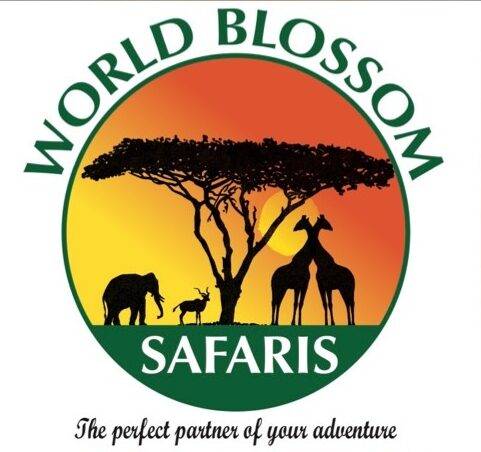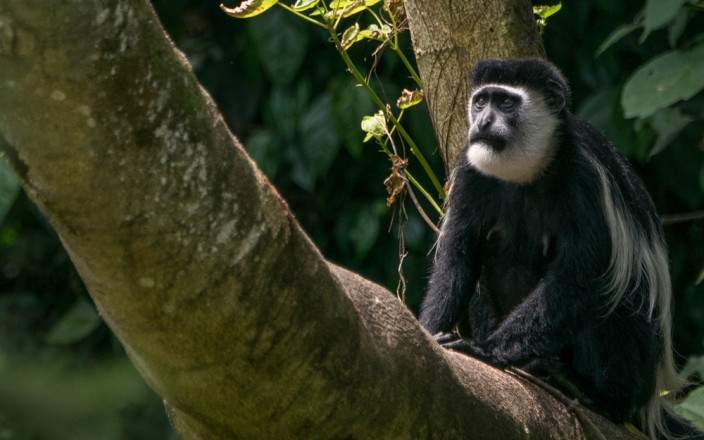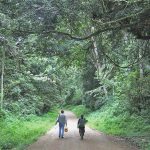Kibale National Park: A Complete Guide to Uganda’s Primate Capital
Kibale National Park, located in western Uganda, is renowned for its rich biodiversity, lush tropical rainforest, and extraordinary primate population.
Known as the “Primate Capital of the World,” Kibale is a must-visit destination for wildlife enthusiasts, adventurers, and anyone seeking an immersive experience in nature.
In this guide, we’ll explore everything you need to know about Kibale National Park—from its diverse wildlife and attractions to accommodations and practical tips for planning your visit.
Park at a Glance
- Location: Western Uganda, near Fort Portal town.
- Size: Approximately 795 square kilometers of mostly tropical rainforest.
- Altitude: Ranges from 1,100 to 1,600 meters above sea level.
- Established: 1993.
- Major Attractions: Chimpanzee trekking, primate walks, and stunning scenery.
- Unique Feature: Highest concentration of primates in Africa.
Wildlife
Kibale National Park is home to over 375 bird species and 70 mammal species, making it one of Uganda’s most biodiverse areas.
However, its most celebrated residents are the 13 primate species, including:
- Chimpanzees: With over 1,500 individuals, the park boasts one of the largest populations of chimpanzees in Uganda.
- Other Primates: Red colobus monkeys, black-and-white colobus monkeys, L’Hoest’s monkeys, blue monkeys, and olive baboons.
- Other Wildlife: Forest elephants, buffaloes, bush pigs, duikers, and various reptiles and amphibians.
Local People
The communities around Kibale are primarily the Batooro and Bakiga people, who have coexisted with the park for generations. Visitors can engage with local cultures through community tours, traditional dances, and learning about sustainable projects, such as tea and coffee farming.
Access
Kibale National Park is accessible by road and air:
- By Road: Approximately 5–6 hours from Kampala via Fort Portal, a scenic journey offering stunning views of Uganda’s countryside.
- By Air: Domestic flights from Entebbe or Kajjansi airstrip to Kasese airstrip, followed by a short drive to the park.
Climate
Kibale has a tropical climate characterized by two rainy seasons:
- Rainy Seasons: March–May and September–November.
- Dry Seasons: June–August and December–February. These are ideal for trekking.
The park’s temperatures range between 14°C and 27°C, making it comfortable year-round.
When to Visit
The best time to visit Kibale National Park is during the dry seasons, when trails are less slippery, and wildlife viewing is at its best.
However, the park is open year-round, and each season offers unique experiences.
Accommodations
Kibale offers a range of accommodations to suit different budgets:
- Luxury: Primate Lodge Kibale, Crater Safari Lodge.
- Mid-Range: Kibale Forest Camp, Turaco Treetops.
- Budget: Chimpanzee Guesthouse, Isunga Lodge.
All options provide easy access to the park and its activities, with a focus on eco-friendly practices.
Activities and Attractions
Chimpanzee trekking is the park’s flagship activity, attracting visitors from around the world. Treks are conducted in small groups led by experienced guides, offering an hour-long encounter with these fascinating primates in their natural habitat.
2. Chimpanzee Habituation Experience
For a more in-depth experience, join the Chimpanzee Habituation Experience, which allows you to spend up to four hours with chimps as they go about their daily routines.
This activity is ideal for wildlife enthusiasts and researchers.
Explore the forest on foot and encounter other primates like red colobus monkeys and L’Hoest’s monkeys. The guided walks also reveal the park’s unique plant life and smaller wildlife.
Bird lovers can spot colorful species like the African grey parrot, great blue turaco, and green-breasted pitta. The park’s diverse habitats make it a bird-watching paradise.
Located near the park, this community-run reserve offers guided walks through wetlands teeming with birds, butterflies, and primates. The sanctuary also supports local conservation efforts.
The Kibale area is dotted with picturesque crater lakes, offering opportunities for hiking, photography, and picnicking.
Visit nearby villages to learn about the Batooro and Bakiga people’s traditions, farming practices, and crafts.
Around the Park
Kibale’s strategic location allows visitors to combine their visit with other attractions:
- Queen Elizabeth National Park: Just a few hours away, famous for its tree-climbing lions and Kazinga Channel.
- Rwenzori Mountains: Ideal for hiking and mountaineering.
- Semuliki National Park: Known for its hot springs and unique bird species.
Tariffs and Payment
Kibale National Park charges the following fees (subject to change):
- Chimpanzee Trekking Permit: $250 per person.
- Chimpanzee Habituation Experience: $300 per person.
- Park Entrance Fees: $40 per person for foreign non-residents.
Payments can be made in cash (USD or Ugandan Shillings) or via electronic methods at the Uganda Wildlife Authority offices. - Permits are sold to only authorized tour operators
Why People Mostly Visit Kibale
- Unparalleled Primate Encounters: The chance to observe wild chimpanzees and other primates in their natural environment.
- Rich Biodiversity: A haven for wildlife and bird watching enthusiasts.
- Conservation Efforts: Visitors support sustainable tourism and conservation projects.
- Accessibility: Easily combined with other Ugandan attractions, making it a key stop on any safari itinerary.
Kibale National Park is more than just a destination; it’s an experience of a lifetime. Whether you’re tracking chimpanzees, exploring vibrant wetlands, or immersing yourself in local culture, the park offers something for everyone. Its beauty, biodiversity, and adventure opportunities make it a must-visit location for travelers seeking a deeper connection with nature.




